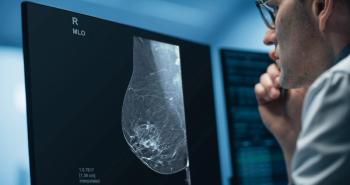
A surprising uncertainty of breast cancer
Mammography is less certain than anyone would like. Comparing the accuracy of MR and x-ray mammography in women with dense breasts makes that clear. But there is another reason for greater concern, and it’s one I would have never suspected.
Mammography is less certain than anyone would like. Comparing the accuracy of MR and x-ray mammography in women with dense breasts makes that clear. But there is another reason for greater concern, and it's one I would have never suspected.
As last year drew to a close, researchers from the Norwegian Institute of Public Health in Oslo raised a scary question in an article that was published in the Nov. 24 issue of the Archives of Internal Medicine. It was not about how many cancers are missed by x-ray mammography but the relevance of those being found.
The Norwegians reported that the cancer rate among women screened every two years was 22% higher than the rate among women of the same age who were screened only once in six years. This raised the question whether some of the cancers detected by mammography would have spontaneously regressed, had they not been discovered and treated.
Dr. Per-Henrik Zahl and colleagues noted that the initiation of screening mammography programs in Europe has been associated with an increased incidence of breast cancer.
"If all of these newly detected cancers were destined to progress and become clinically evident as women age, a fall in incidence among older women should soon follow. This raises the possibility that the natural course of some screen-detected invasive breast cancers is to spontaneously regress," they wrote.
Acknowledging that many clinicians may be skeptical of this possibility, the authors noted a recent literature review that identifies 32 such cases of spontaneous regression of invasive breast cancer. This is a relatively small number, but just because the documented observations are rare does not mean that regression rarely occurs, they pointed out.
"It may instead reflect the fact that these cancers are rarely allowed to follow their natural course," they wrote.
The ramifications of this possibility need careful consideration, particularly as we debate the relative value of MR, mammography, and the latest developments in ultrasound elastography and molecular imaging. The simple fact that the use of one, the other, or all of these modalities uncovers the early signs of breast cancer does not necessarily mean that more cancers will be averted.
We must be especially aware of this as we move forward with more powerful imaging tools and those of higher resolution that promise to find earlier and earlier signs of cancer.
It would be irresponsible to stop screening, as screening finds cancers that progress and threaten the lives of women. But so too would it be irresponsible not to acknowledge the possibility that some breast cancers may spontaneously regress and to conduct the research to identify those that do. Ultimately, imaging modalities may help distinguish benign from malignant signs. But we have to recognize this possibility in order to find it.
We cannot simply assume that identifying the earliest signs of cancer will lead to better outcomes if, in some cases, the best outcome is achieved with no treatment at all.
Newsletter
Stay at the forefront of radiology with the Diagnostic Imaging newsletter, delivering the latest news, clinical insights, and imaging advancements for today’s radiologists.




























